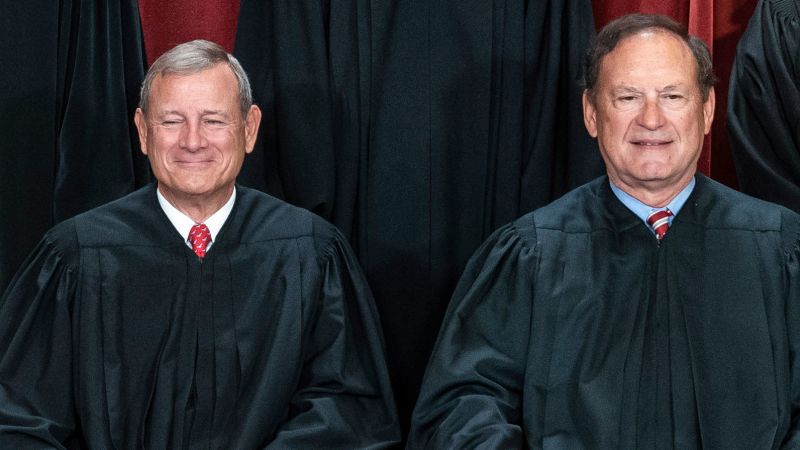As Chief Justice John Roberts and Justice Samuel Alito reflect on their nearing two-decade milestones on the Supreme Court, the topic of retirement has increasingly come to light. Both justices, who were appointed by former President George W. Bush during a tumultuous time in American history, are now weighing their legacies and future plans as they contemplate the impacts of their service on the highest court in the land.
Recently, during two separate events, Roberts, aged 70, has publicly entertained questions about his retirement, indicating he may be assessing life after the bench. Meanwhile, Alito, at 75, reminisced about his colleague Justice David Souter’s decision to retire early, expressing admiration for Souter’s pursuit of a quieter, more private life. Alito noted that he was pleased that Souter could spend his later years in the environment he preferred, having left the court in 2009 at the relatively young age of 69.
Roberts recounted a significant moment back in 2009 when Souter informed him of his retirement intentions. He had desired to return to his home state of New Hampshire, swapping the “white marble” of the Supreme Court for the picturesque White Mountains. Souter’s wish for a more thoughtful, tranquil existence, while not typical of most justices, resonated with Roberts who acknowledged that such a perspective is rare.
Traditionally, the end of the Supreme Court’s annual term, which culminates in June, brings with it speculation regarding retirements. Recently, during oral arguments related to former President Donald Trump’s birthright citizenship initiative, the Supreme Court concluded its public argument sessions. Although inquiries into Alito’s retirement have been met with silence, speculation remains rife. Even in November, as conservative quarters buzzed with predictions of his departure, reports indicated that Alito had no immediate plans to leave the bench, a sentiment echoed by those close to him.
Factors influencing a potential retirement for Alito include his personal health and concerns regarding the political climate surrounding his potential successor. If either Alito, Roberts, or Justice Clarence Thomas—who is nearing 77—step down, it could provide Trump another chance to influence the judicial landscape solidifying a generational legacy.
When addressing retirement questions recently, Roberts dismissively remarked on the notion of an immediate exit from the bench. Still, he voiced the inherent concern an aging justice may face in becoming a “burden to the court.” During a talk in Buffalo, New York, a colleague directly asked Roberts if he contemplated retirement. In a firm retort, he said, “No, I’m going out feet first.” Yet, he did acknowledge that if health issues arise, a different conclusion may be warranted.
Reflections on their time in the Supreme Court include both justices acknowledging their shared journey, having been appointed in 2005 amidst significant national events such as Hurricane Katrina and the death of Chief Justice William Rehnquist. Their appointments ushered in a new era, with Roberts leading a trajectory that favored presidential authority while eroding individual rights. Alito notably authored the pivotal 2022 decision that reversed Roe v. Wade, impacting nearly half a century of abortion rights in America.
Roberts recently reflected on his nomination processes, noting setbacks early in his career and how those experiences shaped his path to the Supreme Court. While recounting the missteps and political maneuvering of the past, Roberts highlighted the importance of patience and long-term vision, suggesting, “you want your bad luck to be good.” He believes that had he been confirmed earlier, he may have borne too much “baggage” for consideration in future nominations.
Many of their prominent decisions have tested the limits of judicial philosophy and public perception. Alito, a figure often seen as outspoken, faces scrutiny not just for his rulings but for his off-bench interactions, including a controversial call with Trump during sensitive legal proceedings. This dynamic illustrates the tension between the judicial role and external political pressures, with Trump highlighting his profound influence over the federal judiciary during his 2023 campaign remarks.
As the courts navigate these waters, the looming question remains: How will the legacies of these justices unfold as they continue to shape American jurisprudence against the backdrop of political turmoil and public expectation? Both Roberts and Alito are now at critical junctures—not just in their careers but also in crafting the future of the Supreme Court amidst a landscape of shifting societal norms and expectations. Each day they sit on the bench reflects their ongoing influence on the judiciary, the nation, and what it means to engage with the pressing issues of modern America.



